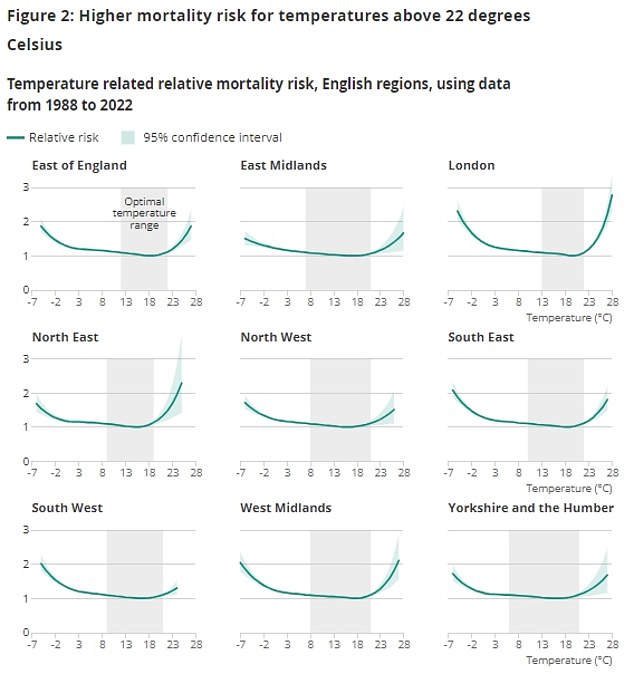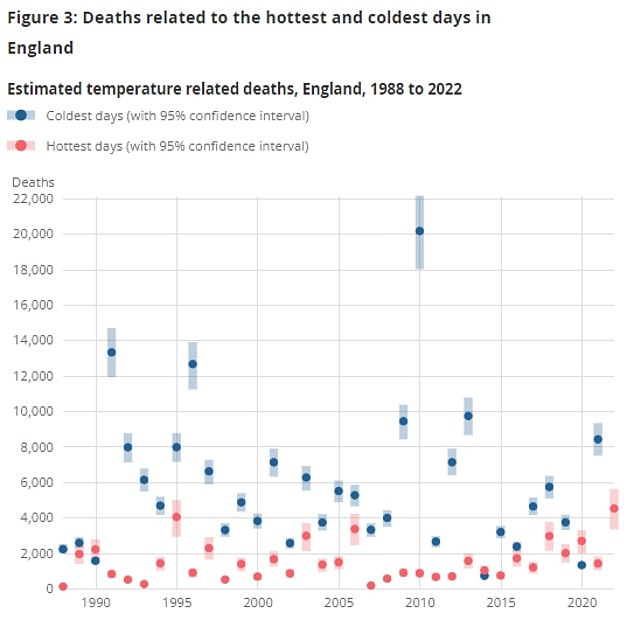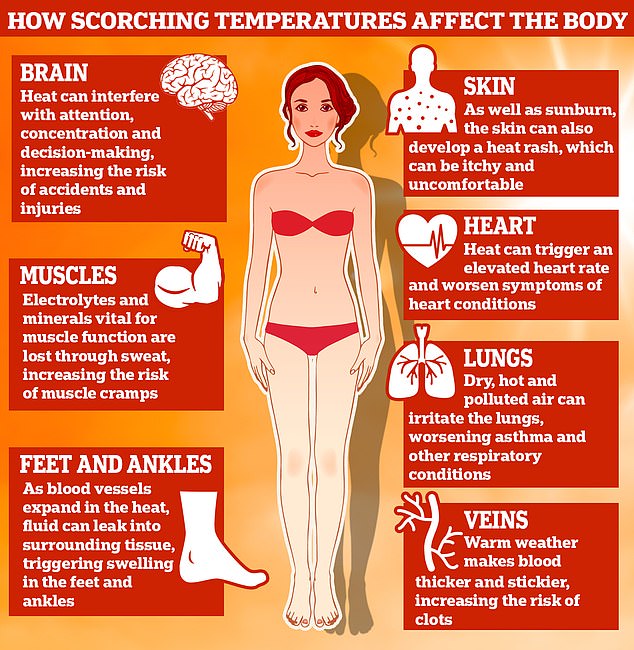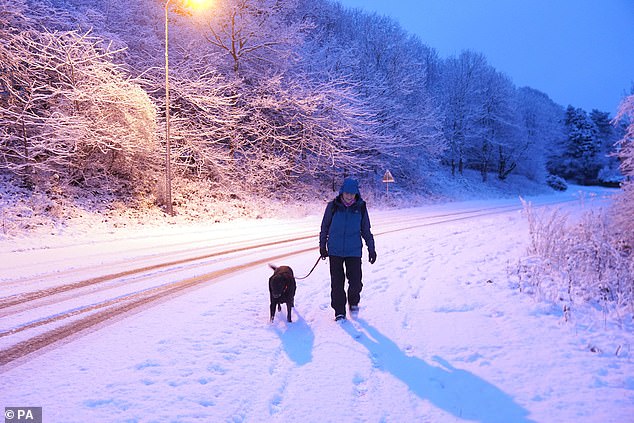Cold weather has killed four-times as many Brits as heat in recent decades – but rising temperatures pose ‘growing threat’, experts warn
Four times as many Britons have died from cold weather than from high temperatures in recent decades, but the gap is closing, new figures suggest.
Researchers estimate that between 1988 and 2022, more than 53,000 heat-related deaths and more than 215,000 cold-related deaths occurred in England and Wales.
Although England has historically seen many more deaths from cold, the Office for National Statistics says heat-related deaths appear to have increased in recent years.
In 2022 there were more than 4,500, more than any other year in the analysis.
Last year was the hottest year in Britain according to measurements dating back to the late 19th century, with scientists warning that summers of 40 degrees Celsius will become more common in the future as the climate warms.
The shaded area shows the optimal temperature range, where the mortality risk is lowest. The relative risk of death (curved lines) indicates the probability that an individual will die during or shortly after exposure to a certain temperature.

The ONS figures show that the risk of death in London triples when temperatures rise above 29 degrees Celsius, compared to when temperatures are between 9 degrees and 22 degrees Celsius. All regions of England and Wales showed an increased risk of death above 22 degrees Celsius, with people over 65 the most vulnerable

Although England has historically seen many more deaths from cold, the Office for National Statistics says heat-related deaths appear to have increased in recent years. In 2022 there were more than 4,500, more than any other year in the analysis
The ONS figures show that the risk of death in London triples when temperatures rise above 29 degrees Celsius, compared to when temperatures are between 9 degrees and 22 degrees Celsius.
All regions of England and Wales showed an increased risk of death above 22 degrees Celsius, with people over 65 the most vulnerable.
The greatest risk is when the temperature rises above 25 degrees Celsius or falls below minus 5.
Researchers from the University of Oxford recently published a report indicating that British buildings need to be adapted to protect people from extreme heat.
Campaigners, MPs and charities are also urging the Government to fully insulate homes to protect people in winter and help them save on energy costs.
For large cities the risk of overheating is greater due to the so-called ‘heat island effect’ and these can be several degrees higher than in the surrounding countryside.
Buildings, roads and sidewalks absorb and reject the sun’s energy, especially at night, making it difficult for people to cool down.
Gillian Flower, a statistician at the ONS, said: ‘Our analysis shows that historically very low temperatures in England have been responsible for a greater number of deaths than very high temperatures, although there is some evidence that heat-related deaths have increased in recent years. increased.
‘We continue to develop our methods to measure climate-related health outcomes, and monitor the situation in the context of the increasing frequency of warmer days.
‘The direct causes of death vary at different temperatures. Further research is needed to understand how this might be linked to extreme heat or extreme cold.”
The NHS website warns that hot weather can lead to dehydration and overheating, which can make symptoms worse for people who already have problems with their heart or breathing.
People at highest risk include people over 75 years of age, patients with serious or long-term conditions, people taking multiple medications, and people who spend a lot of time outdoors.
It suggests staying out of the sun between 11 a.m. and 3 p.m., wearing sunscreen, a hat and light clothing, and avoiding exercise or activities that make you feel warmer.
The health department also advises people to consume cold food and drinks, take a cool shower and close windows during the day.
The NHS says keeping warm during the winter months can help prevent colds, flu and more serious health problems such as heart attacks, strokes, pneumonia and depression.

Muscle cramps may also become more common due to dehydration, as electrolytes and minerals essential for muscle function are lost through sweat. In hot weather, some parts of the body, such as the hands, feet and ankles, may also swell. Heat causes blood vessels to expand, allowing fluid to leak into surrounding tissues, causing swelling known as heat edema

A woman walks her dog in snowy conditions near Hexham in January 2023

Joggers go for a morning run on Primrose Hill in North London shortly after sunrise today in September 2023
The UK Health Security Agency also warns that during cold weather people may use faulty or unsuitable appliances to heat their homes and trip or slip on snow and ice.
It is suggested to heat homes to at least 18 degrees Celsius, wear several layers of thinner clothing, walk around and wear shoes with good grip.
The ONS has compiled its figures based on information from the Center for Environmental Data Analysis and has developed a new method for understanding how temperature affects the risk of death.
Their analysis also showed a sharp rise in deaths during the winter of 2010/2011, when Britain saw unusually cold temperatures drop south from the Arctic.
Holly Holder, deputy director for homes at the Center for Aging Better, said: ‘These new statistics showing the growing threat to health from rising temperatures confirm that it would be a serious mistake to delay or reverse net zero policies to turn.
‘Too many people live in homes that are too cold in winter and too hot in summer and feel helpless in making the improvements their property needs.
‘Poor older people are proportionately more likely to live in the most energy-inefficient homes and are among the most likely to experience a deterioration in their health during extreme weather.
‘Climate change is not just something that happens in Antarctica or in very hot countries, it is affecting lives and taking lives here in Britain.
‘Our housing is the oldest and of the poorest quality in Western Europe and is not fit for purpose to meet the challenges of more extreme temperatures and weather.’
